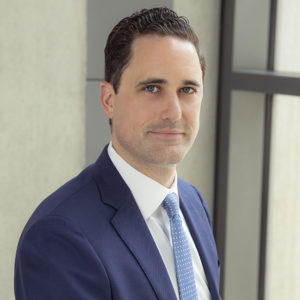Hair replacement procedures have been around for a long time, but due to advances in hair restoration technology and procedures, there is a resurgent focus on hair restoration in the aesthetic space. As with any popular procedure, high focus equals high volume, which can equal high revenue for an aesthetic practice. The downside to such “hot” procedures is that, due to a lack of understanding and good old fashioned corner cutting, not all hair restoration procedures are created equal. In fact, in terms of safety and quality, hair restoration suffers from many of the same issues that face other common, popular medical cosmetic procedures.
So, if offering hair restoration in your aesthetic practice, here’s what you need to know about hair restoration laws:
Practice of Medicine. As is often the case in aesthetic procedures, people often overlook the fact that hair restoration procedures constitute the practice of medicine and should be performed or supervised by qualified physicians. There are two methods for harvesting the hair follicles that will be used to seed the balding areas: follicular unit transplantation (“FUT”) and follicular unit extraction (“FUE”). While this article will not deep-dive into the hair restoration process, it is important to understand that both FUT and FUE are invasive and seek to remedy a physical condition in the body. The former requires a strip of scalp skin to be excised via scalpel and the latter requires tiny holes to be made in the patient’s scalp with a blade or needle. As we so often reiterate, if a procedure penetrates, pierces, or affects below the epidermis, it is likely considered the practice medicine. This holds true for hair restoration, especially when considering the goal of the treatment is to remedy a physical condition that impacts many men and women.
The reason it is important to understand that hair restoration constitutes the practice of medicine is that this informs initial patient contact and supervision and delegation of the procedure. Specifically, patients seeking hair restoration will need to have an initial consult appropriate to the procedure and physicians will need to carefully consider the required competence and levels of supervision if they choose to delegate the procedure.
Carefully Consider Delegates. Anyone who has heard ByrdAdatto speak knows that the first issue to consider in delegation and supervision is the diagnosis and treatment plan. In virtually every state, only a physician, nurse practitioner or physician assistant with proper training may determine that a medical procedure is appropriate for the patient. We often call this requirement the compliance widowmaker for aesthetic practices. Other than an investigation arising out of a poor patient outcome, this is the top compliance risk and the most visible to the appropriate boards.
It is next important to make sure the people performing the procedures are authorized to do so in the applicable state. It’s not uncommon to see facets of the hair restoration delegated to medical assistants (“MAs”) and other unlicensed persons. In fact, technicians (a fancy title for an unlicensed person) often train practices on the procedures. This can be problematic in many states even if the unlicensed person has training on the hair restoration procedures. Consequently, it becomes critical on a state by state basis to understand who is allowed to perform the procedures by delegation. Typically, registered nurses, nurse practitioners, physician assistants, and physicians may perform the procedures across the states. The states vary quite a bit on the scope of practice of anyone below a registered nurse.
Ignore Your Salesperson’s Legal Advice. A significant factor contributing to the resurgence in popularity for hair restoration services and confusion regarding practice of medicine and delegation and supervision can be attributed hair restoration medical devices. These devices are designed to increase precision, reduce invasiveness, and simplify the hair restoration process. However, these advancements do not replace the need to have a qualified physician involved in the hair restoration process. Unfortunately, some people do use hair restoration devices as a substitute for proper medical personnel. Compounding this issue further is the fact that in some instances it is the medical device salesperson giving inaccurate advice about delegation and supervision of hair restoration when using a medical device.
Delegation and supervision issues are driven by state laws and often require understanding and harmonizing statutes, regulations, board opinions, and in some cases, attorney general opinions. So while salespersons can be sources of useful information, make sure to ask an experienced healthcare attorney about any legal claims a medical device salesperson makes before you spend money on the device.
If you have any questions regarding the laws applicable to hair restoration services or your aesthetic practice in general, please contact us at info@byrdadatto.com.
